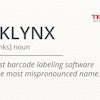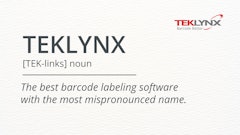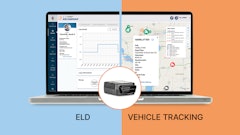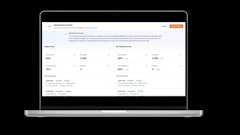
In a data-driven world, product-focused businesses aren’t just guessing their way to success—they’re using predictive insights to sharpen operations, boost efficiency, and keep customers coming back. In distribution, where every dollar counts and margins are razor-thin, the ability to predict, optimize and act is the ultimate competitive advantage.
There’s a growing desire to examine trailing trends and harness the power of predictive analytics. Making better decisions and shifting from reacting to problems to proactively solving them are now at the top of my mind for fueling growth and profits.
It’s called order intelligence, the concept of easily driving more efficient, more profitable and more flawless orders with the power of artificial intelligence (AI) and actionable data. And we’re not alone. Many enterprise resource planning (ERP) and business intelligence (BI) systems are advancing to help businesses of all types become more proactive in their order processes. Here’s how the rise of predictive analytics pertains to order management and accuracy.
The power of knowing what comes next
For starters, predictive order analytics doesn’t just transform order management processes. It’s quickly becoming a revenue growth engine with the ability to forecast demand trends, refine pricing, and optimize inventory.
Think about the complexity and cost of poor inventory management. Too much stock, and you burn through cash. Too little, and you lose sales and customers. Predictive analytics can remove the guesswork and provide the insights needed to make the best decisions based on historical data. By understanding market trends, and most importantly, customer behavior, your business can stock the right amount of inventory levels when and where it’s needed.
However, predictive order analytics is most impactful in its ability to address churn.
Addressing churn
Here’s the hard truth across industries -- customer churn cuts deeper than many realize (or want to admit). On paper, it’s lost revenue, but let’s consider the costs of acquiring that customer, the time spent nurturing them, and the challenge of replacing them. Retaining customers is the backbone of profitability for product-centric brands. Research shows that churn rates can reach 30%, and the resulting time and cost of new customer acquisition are no joke.
So, what causes churn? Sometimes, it’s mismatched expectations or a competitor wooing customers away. Or, it’s as simple as customers feeling overlooked or disregarded. Whatever the reason, there are often warning signs: declining orders, fewer interactions with account managers, and ignored emails.
The goal of predictive analytics is to catch red flags early, provide opportunities to re-engage, and remind customers why they chose you in the first place.
Here are four best practices to leverage predictive analytics:
● Get personalized. Identify buying patterns to tailor promotions or recommendations that will entice individual customers.
● Get targeted. Look at historical behavior patterns and segment them to deliver targeted messages or conversations.
● Get proactive. Monitor order trends to detect impactful issues, like lower purchase frequency.
● Improve the experience. Optimize the customer journey by anticipating needs and building loyalty with proactive engagement.
Why data-driven wins every time
Predictive analytics isn’t just the latest tech jargon. We live in an era where data provides the foundational understanding of customer needs and behavior. Modern data analytics tools can quickly predict success or failure. For distributors and manufacturers, improved order accuracy and customer engagement is a great way to improve profits.
By embedding predictive analytics into order management processes, you’re no longer playing defense against churn. You can use data points to find new revenue opportunities and maximize growth.
Here are the best practice steps for gaining value from analytics in the distribution and manufacturing sphere
- Integrated analysis. Siloed data can be ineffective, so consolidate sales data, inventory records, and customer purchase histories. By analyzing trends and patterns holistically, you can gain actionable insights.
- Predictive order management. Based on order behavior, you can identify the most lucrative accounts to increase engagement and retention.
- Proactive inventory optimization. Many ERP and BI tools provide real-time demand forecasting insights to align inventory levels with anticipated sales. These capabilities help reduce the risk of stockouts and overstocking and ensure products are always available.
Predictive analytics is making order management more efficient, and best of all, more customer-centric. Being proactively profitable always beats operating on exhausting guesswork and infuriating reactivity.




















